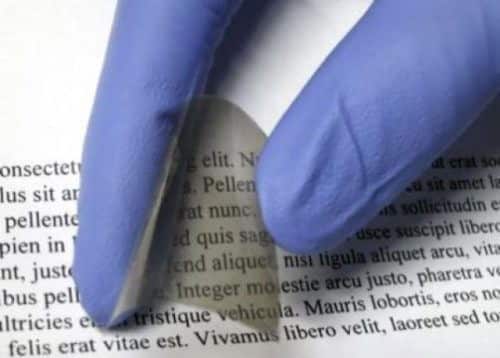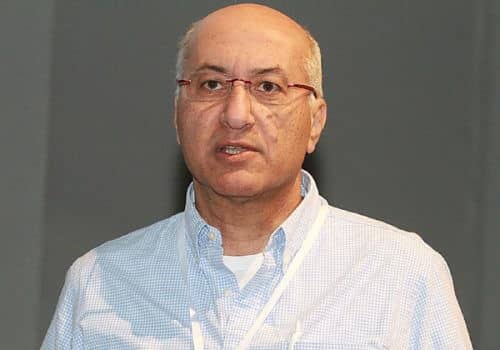This is what Prof. Shlomo Magdessi, head of the XNUMXD Printing Center at the Institute of Chemistry at the Hebrew University, said. ● According to him, "It is possible to create special shapes that cannot be produced by conventional processes, and to build structures that respond to moisture, light, acidity, and more."

"The next step - manufacturing products in XNUMXD that will also have the ability to react, or as it is called - functional printing. This method will bring about the next industrial revolution", said Prof. Shlomo Magdessi, head of the XNUMXD printing center at the Institute of Chemistry at the Hebrew University.
Magdessi spoke at the 3D Printing Israel 2016 conference produced by people and computers, which took place on 27/11/16 at the LAGO conference center in Rishon Lezion. The conference was moderated by Yariv Inbar, CEO of Mediatech-John Bryce Hi-Tech.
Prof. Magdessi, who published 250 articles and issued 70 patents that are today incorporated in many companies in the industry, described the functional printing revolution. "Since Johannes Gutenberg invented the printing press in 1445, not much has changed in the field of printing. The general idea was to take paint and put it on paper. We all have a printer at home that does exactly that."
to last forever
According to him, "In our laboratory, we were able to perfect the process by mixing pigments with synthetic materials, and turning them into particles dispersed in a liquid - which is actually ink, containing ceramic materials, which will last forever."
"Even in this segment of XNUMXD printing, new things can be done - Deep Tech has developed a printing system for glass, when the layers of glass are printed so that XNUMXD printing is an integral part of the glass itself, and our development was to ensure that the glue does not deteriorate when 'baked' The glass," explained Magdessi.
"This is how you can see the windshield of a car with paintings and entire facades of buildings combined with printed glass. The ability to print on glass also allows us to print solar cells on top of glass. You can print a building whose entire facade is a solar cell," he said.
According to Magdasi, "It is also possible to print electrical contacts for the purpose of receiving various devices - such as touch screens, light-receiving devices, smart windows that turn from glass to opaque at the push of a button. "Nano-Dimension uses it for printed circuits."
So far Magdessi has talked about methods for XNUMXD printing on non-conventional surfaces and adding functionality to sensors, screen walls, etc. "We are now investigating the ability to print functional systems in XNUMXD."
produce stronger products
"At the beginning of 2016, we established a XNUMXD printing center at the Hebrew University. The center is open to start-up companies, to students from all fields at the university; Agriculture, medicine, biology, chemistry and physics and also for students from other places such as Bezalel. The idea is to produce stronger, heat-resistant products, etc. - in XNUMXD."
Functional XNUMXD printing, says Prof. Madgesi, "enables the introduction of materials into the XNUMXD object, for example particles that emit light when there is a current. The world is talking about printing pills that allow you to control when the medicine inside will be released and at what rate, adjust it to the specific person and decide that the medicine will start to be released, say, at four in the morning."
According to him, "we are already seeing printing of hearing aids, teeth, metal structures inserted into the body to replace damaged organs and even seeing buds of printing living organs - for now at least tissues".
"We produce new materials in the laboratory that have unique properties," said Magdessi. "Just recently we submitted an article about a material that can stretch by 1,100%. This can be used for flexible printed circuits with unique features. You can use it for robots in production lines, you can create special shapes that cannot be created in conventional production processes."

Something that is part of our life
"An example of this is Shape Memory Polymer - a material that at 37 degrees turns into a tube, and thus it is possible to insert a support (stent) that will open to the desired shape when it is inside the body."
"In addition to heat, structures can be built that react to moisture, light, acidity, and more - for example, a hydrogel that reacts to water and from which we will produce a dry pill that is released only when it reaches the desired acidity - for example, in the stomach in an acidity environment of 1.2 PH, nothing will happen - but when it reaches the intestines, where the PH is 7.5, it will release the drug. Another example, a student from Bezalel managed to create a jewel in the shape of a flower that opens in response to external stimuli and more."
According to Inbar, CEO of Mediatech-John Bryce Hi-Tech, "We can see a change when two years ago and a year ago we talked more about gimmicks, gadgets and the like. Today we see that the market has become much more mature."
"We see factories that if in the past they would have talked about XNUMXD printing as another gimmick or let's put a printer that they will say there is, today there are already factories that are setting up production lines based on XNUMXD printing together with robots."
According to him, "Today's systems are much more reliable and capable of working at high output. Not mass production yet but definitely already in production. In the past they used to talk about prototypes, glupots. Today we see an entire Airbus factory that is based on XNUMXD printing and produces parts for the aerospace industry, and we will see more and more new factories that will use XNUMXD printing as part of the production process. Not a future vision - it becomes something that is part of our lives."
The article was first published on the People and Computers website

One response
Greetings,
I am a representative of a pop-up company from the Young Entrepreneurs Project and we are interested in receiving a quote regarding the production of 150 copies of our product from the nylon 12 material. We will provide the factory with the prototype.
The members of the project are XNUMXth graders, so please consider the price.
Thanks, Pop Up Company.